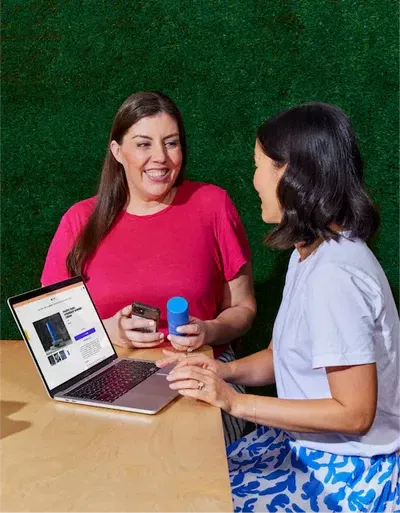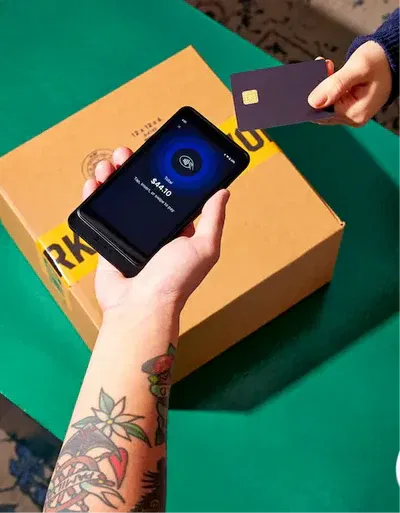Need Web Page Design Help? Here’s How to Build a Better Website
Web Page Design Help: The Ultimate Guide to Building Beautiful, Functional Websites
If you’re searching for web page design help, you’re not alone. Whether you’re building your first website or improving an existing one, the process can feel overwhelming. From layout and typography to SEO and user experience, great web design requires thoughtful planning, creative vision, and the right tools.
This comprehensive guide is here to provide actionable web design advice, valuable insights, and step-by-step directions for anyone looking to level up their digital presence. With the right web design tips, you can transform a simple page into a conversion machine.
| Category | What to Do | What Not to Do | Why It’s Important |
|---|---|---|---|
| Site Purpose | Define clear goals (e.g., sales, bookings, info sharing) | Don’t build without a clear user journey | Guides layout, content, and conversions |
| Layout & Structure | Use grid systems, white space, and visual hierarchy (F/Z pattern) | Avoid cluttered or unstructured pages | Improves readability and user flow |
| Typography | Use 1–2 legible fonts, maintain hierarchy (H1–H3), proper spacing | Don’t use overly decorative or multiple fonts | Enhances clarity and professionalism |
| Color Scheme | Stick to a consistent brand palette (primary + accent) | Avoid harsh or inconsistent color combinations | Reinforces branding and visual appeal |
| Images & Media | Use high-quality, optimized images with alt text | Don’t upload large or irrelevant visuals | Supports speed, accessibility, and engagement |
| Navigation | Keep menus simple with 5–7 items, use sticky headers or breadcrumbs | Avoid hidden pages or complex dropdowns | Helps users find content quickly |
| CTAs (Call to Action) | Use strong verbs (“Buy Now”, “Get Quote”), visible placement | Don’t hide CTAs or use vague labels like “Click Here” | Drives conversions and leads |
| SEO Optimization | Use H-tags, meta descriptions, keywords, and descriptive URLs | Don’t forget to optimize image alt text and on-page content | Boosts visibility on search engines |
| Accessibility | Ensure contrast, keyboard navigation, labels, and readable fonts | Don’t neglect users with disabilities | Expands reach and meets legal/design standards |
| Mobile Responsiveness | Use flexible layouts, large buttons, and test on various devices | Don’t design only for desktop screens | Mobile-first design improves UX and SEO |
| Performance Speed | Compress images, minimize scripts, use caching | Avoid heavy media files or unoptimized code | A fast site retains users and ranks higher |
| Maintenance | Update plugins, test forms, refresh outdated content monthly | Don’t ignore broken links or outdated info | Keeps the site secure, reliable, and relevant |
| Content Strategy | Focus on concise, valuable pages (Home, About, Services, Contact) | Don’t overload with unnecessary content | Improves clarity, engagement, and navigation |
| Blog & Authority | Add helpful blog posts monthly for SEO and customer education | Don’t publish filler content or duplicate posts | Builds trust and organic reach |
| Tools & Resources | Use GTmetrix, WAVE, Figma, Google Fonts, Coolors, WordPress, etc. | Don’t rely solely on visual tools without performance checks | Enhances design efficiency and ensures best practice implementation |
Why Web Page Design Matters More Than Ever
In the digital-first world, your website is often your audience’s first impression. It serves as your virtual storefront, your business card, and your best salesperson.
Bad design = lost opportunities. Good design = trust, credibility, and revenue.
So if you find yourself asking questions like “how can I design a website?” or “I want to design a web page but don’t know where to start”, this guide is for you.
Who This Guide Is For
This article is created for:
- Solopreneurs and small business owners
- Bloggers and content creators
- Freelancers and side hustlers
- Marketing professionals
- Anyone needing web page design help without hiring a full team
No matter your technical level, we’ll walk you through the steps to design a website from scratch.
The 10 Commandments of Web Page Design Best Practices
Let’s start with a bird’s-eye view of what makes a site work. Follow these website design best practices to build a site that’s effective, professional, and user-friendly:
- Clarity over cleverness: Use clear, jargon-free language.
- Keep navigation simple: Visitors should never feel lost.
- Design for mobile first: Over half your traffic comes from phones.
- Prioritize speed: Slow sites kill conversions.
- Visual hierarchy matters: Guide the eye with layout and spacing.
- Limit distractions: One main goal per page.
- Use strong CTAs: Tell users what to do next.
- Stick to brand consistency: Colors, fonts, tone—make them match.
- Optimize for accessibility: Design for everyone.
- Test and tweak regularly: Iterate based on data.
These web page best practices are timeless foundations for any site.
Insert an image of a clean wireframe or layout mockup here.
Step-by-Step Website Design: From Idea to Launch
1. Define Your Purpose
Before diving into design tools or themes, define what your site is for:
- Selling products?
- Booking services?
- Sharing information?
- Building a community?
Understanding this shapes all design choices. This is the first step in the step by step website design process.
2. Research and Inspiration
Browse sites you love. Ask yourself:
- What layouts do they use?
- How do they guide users?
- What colors and fonts stand out?
Platforms like Awwwards and Dribbble are goldmines for web design suggestions.
3. Sketch a Rough Wireframe
Use pen and paper or tools like Figma or Canva to outline:
- Header
- Navigation
- Hero section
- Content blocks
- Footer
It doesn’t have to be pretty—just structured.
4. Choose Your Platform
Whether you want a drag-and-drop builder or full customization, your options include:
| Platform | Best For | Link |
|---|---|---|
| Wix | Beginner-friendly, drag-and-drop | wix.com |
| WordPress | Blog-heavy or custom sites | wordpress.org |
| Squarespace | Portfolio or service-based websites | squarespace.com |
| Webflow | Design-heavy, professional control | webflow.com |
Web Design Tips for Layout and Structure
- Use grid-based design for balance.
- Keep key info above the fold.
- Stick to a visual flow: F-pattern or Z-pattern.
- Use ample white space for readability.
These web page design tips help keep users engaged and focused.
Insert an image of F-pattern layout example here.
Web Design Help for Typography and Fonts
Text should be readable on all devices. Some web design good practices include:
- Choose clean, sans-serif fonts like Open Sans or Roboto.
- Use a hierarchy: H1 for main headings, H2 for subheads, etc.
- Avoid using more than two font families.
- Ensure 1.5x line spacing.
Need more help? Explore Google Fonts for free options.
Color Schemes and Branding
Color affects emotion and behavior. Effective web page design help suggests:
- Choose a primary color and 1-2 accent colors.
- Use contrast for buttons and CTAs.
- Stick to your brand colors for consistency.
Use tools like Coolors or Adobe Color to find palettes.
Web Design Suggestions for Media and Images
Visual content breaks up text and improves retention. Follow these web design tips:
- Compress images before uploading to reduce load time.
- Use original images or high-quality stock.
- Add alt text for accessibility and SEO.
Sites like Unsplash and Pexels are excellent free sources.
Website Design Guidelines for CTAs and Buttons
Every page should drive an action. Effective web page design help includes:
- Use clear verbs: “Buy Now,” “Get a Free Quote,” “Start Trial.”
- Place CTAs in visible, high-traffic spots.
- Use contrasting button colors.
Pro tip: Repeat your CTA at the top, middle, and end of each page.
SEO and Performance Optimization
Search engines love fast, structured, keyword-rich websites. Here’s web design help for SEO:
- Use H1 for titles, H2 for subtitles.
- Include keywords naturally in your text.
- Optimize images with descriptive file names and alt text.
- Submit your site to Google Search Console.
Need more? Read Ahrefs’ guide to on-page SEO.
Accessibility Tips and Web Design Good Practices
Make your site usable for everyone by following these web page design best practices:
- Ensure color contrast meets WCAG guidelines.
- Add labels to form fields.
- Enable keyboard navigation.
- Avoid flashing or blinking animations.
Use the WAVE tool to audit accessibility.
Common Mistakes to Avoid
Even experienced creators need web page design help now and then. Avoid:
- Overcrowding pages with content
- Using low-contrast text on backgrounds
- Too many popups or auto-play videos
- Ignoring mobile performance
Stick to these website design guidelines to stay user-friendly.
Maintenance: The Ongoing Side of Design
Designing site are only part of the job—maintenance is ongoing. Tips:
- Check site speed monthly with GTmetrix.
- Update plugins or integrations.
- Test forms and CTAs regularly.
- Backup your site weekly.
This web design help ensures your site stays functional and safe.
Recap Table: Your Web Page Design Help Toolkit
| Design Element | Best Practice | Tools/Resources |
|---|---|---|
| Layout | Use grid design, clear flow, white space | Figma, Adobe XD |
| Typography | Use clean fonts and hierarchy | Google Fonts |
| Colors | Choose brand palette with contrast | Coolors, Adobe Color |
| Images | Use quality visuals with alt text | Unsplash, TinyPNG |
| Navigation | Keep menus simple and clear | Sticky headers, breadcrumbs |
| CTAs | Clear, actionable buttons | ConvertFlow, Thrive Leads |
| SEO | Use headings, alt text, keyword placement | Yoast SEO, Ubersuggest |
| Accessibility | Design for all users | WAVE, aXe |
| Maintenance | Update plugins, check speed, fix bugs | GTmetrix, ManageWP |
Top 15 FAQs About Web Page Design Help
1. What is the best way to get web page design help as a beginner?
The best way to get web page design help as a beginner is to follow a structured approach:
-
Use beginner-friendly website builders like Wix, Squarespace, or WordPress.com
-
Study free resources like freeCodeCamp or MDN Web Docs
-
Start with basic projects to learn how to make and design a website gradually
Understanding the steps to design a website gives you clarity and confidence. You don’t need to be a coding expert to get started—just curiosity and consistency.
2. I want to design a web page. Where do I begin?
If you’re saying “I want to design a web page”, start by outlining your goals:
-
What is the purpose of the page? (e.g., sales, information, booking)
-
Who is your target audience?
-
What actions do you want them to take?
Then follow this roadmap:
-
Choose your platform (Wix, Shopify, WordPress)
-
Select a theme/template
-
Customize content and visuals
-
Optimize layout for mobile and desktop
-
Add SEO elements and launch
Many people seeking web page design help skip the planning stage—but that’s where clarity begins.
3. How can I design a website that looks professional?
To create a professional website, focus on these web page design best practices:
-
Consistent branding: Colors, fonts, and tone of voice
-
Simple navigation: Limit top-level menu items to 5–7
-
Responsive design: Your site must look great on all devices
-
Clear CTAs: Buttons like “Get a Quote” or “Contact Us” should stand out
-
Social proof: Add testimonials, ratings, or trust badges
Whether you’re learning how to design web design or looking for help website design, these tips ensure users take you seriously.
4. What tools do you recommend for web design help?
Here’s a curated list of tools for anyone needing web design help:
| Purpose | Tool |
|---|---|
| Wireframing | Figma, Adobe XD |
| Layout Design | Canva, Webflow |
| Typography | Google Fonts |
| Color Schemes | Coolors, Adobe Color |
| Speed Optimization | GTmetrix, TinyPNG |
| Accessibility Audit | WAVE Tool, aXe |
Using these tools simplifies how to create and design a website with better results.
5. What are the most important web design tips for small websites?
When designing small sites, follow these web design tips:
-
Keep the homepage clean and focused
-
Use high-contrast colors for buttons
-
Include only essential pages (Home, About, Contact, Services)
-
Limit animations and fancy effects that slow down the site
-
Optimize images and test speed regularly
These site design tips help keep your site fast, user-friendly, and professional—exactly what most users are looking for when they search for web page design help.
6. What content should I include on a basic website?
A simple yet effective site should include:
-
Homepage: Value proposition and CTA
-
About Us: Company story or personal bio
-
Services/Products: Clear listing and benefits
-
Contact Page: Form, phone, email, and address
-
Testimonials or FAQs: Build trust and clarify doubts
This is a core part of step by step website design that many beginners overlook.
7. How do I make my web page design mobile-friendly?
Mobile optimization is non-negotiable in today’s web world. For effective web page design help, follow these mobile-first principles:
-
Use flexible grid layouts (CSS Grid or Flexbox)
-
Make buttons large and tappable
-
Avoid popups or elements that block mobile view
-
Use Google’s Mobile-Friendly Test
Following these website design guidelines ensures your site performs well across all devices.
8. What are common mistakes beginners make when designing web pages?
Here are key errors that people new to web design often make:
-
Using too many fonts or clashing colors
-
Ignoring mobile responsiveness
-
Forgetting CTAs
-
Overloading pages with too much text
-
Not compressing large images
Avoiding these missteps is part of smart web design good practices. web page design help
9. How do I optimize my web design for SEO?
SEO is critical for visibility. Apply these website design suggestions for better ranking:
-
Use heading tags (H1, H2, H3) appropriately
-
Include your keywords naturally (e.g., web page design help)
-
Use descriptive URLs like /about-us web page design help
-
Add alt text to images
-
Link internally to related content
Need more SEO-friendly web design help? Use tools like Yoast SEO or Ubersuggest to audit and optimize your content.
10. What’s the difference between web design and web development?
Understanding the difference helps when you seek web page design help: web page design help
-
Web Design = The look and feel (layout, colors, typography, UX)
-
Web Development = The code and functionality (HTML, CSS, JavaScript, databases)
You can design a beautiful site using no-code tools even if you’re not a developer. But when in doubt, collaborate with a developer who understands how to implement your designs effectively.
11. How often should I update my website design?
A good rule of thumb is to refresh your site design every 2–3 years or sooner if: web page design help
-
Your branding changes
-
The site isn’t mobile-friendly
-
The design feels outdated
-
Bounce rates are high
Continuous improvement is part of long-term web design help that boosts user retention and search performance.
12. What are the steps to design a website from scratch?
If you’re starting from zero, follow this step-by-step website design plan: web page design help
-
Define goals and audience
-
Sketch a layout or wireframe
-
Choose a platform (Wix, WordPress, Webflow)
-
Select a theme/template
-
Add content and visuals
-
Optimize for SEO and speed
-
Launch and monitor performance
This structured approach is exactly what people mean when they ask, “how to make and design a website efficiently?”
13. How can I create a web page that stands out?
To stand out: web page design help
-
Use a unique headline or story on the homepage web page design help
-
Add animations or scroll-triggered effects tastefully web page design help
-
Create interactive elements (e.g., quizzes or calculators)
-
Use bold CTAs and custom icons
Balance creativity with functionality. Web design suggestions that prioritize clarity AND style have the most impact.
14. How can I get ongoing web design help without hiring a full-time designer?
If you need ongoing support, but not a full-time team:
-
Subscribe to a design subscription service like Design Pickle
-
Use freelance platforms (Upwork, Fiverr)
-
Use website builder support or communities
-
Bookmark resources like Smashing Magazine for up-to-date tutorials
Getting web design help doesn’t always mean paying big. There are plenty of cost-effective solutions out there.
15. What’s the fastest way to learn how to create web page design?
The fastest path combines theory and practice. Follow this plan: web page design help
-
Take a free course from Coursera or freeCodeCamp
-
Practice building real projects (portfolios, blogs, landing pages) web page design help
-
Join design communities or forums for feedback web page design help
Hands-on experience is key. The more you build, the better you get. It’s the smartest way to master how to create web design that works.
Final Thoughts: You Don’t Need to Be a Designer to Design Well
With the right web page design help, anyone can build a stunning, strategic site. From the first wireframe to the final launch button, your focus should always be on the user. Every color choice, paragraph, and button placement matters.
So whether you’re asking, “how to make web page design better?”, “how to create web page design from scratch?” or “help website design look more professional,” this guide arms you with practical answers.
Start simple. Test often. Stay consistent. And remember, even top designers began with a blank screen and a vision.
Need even more support? Check out Smashing Magazine’s Web Design Guidelines or this free step-by-step website design checklist.




